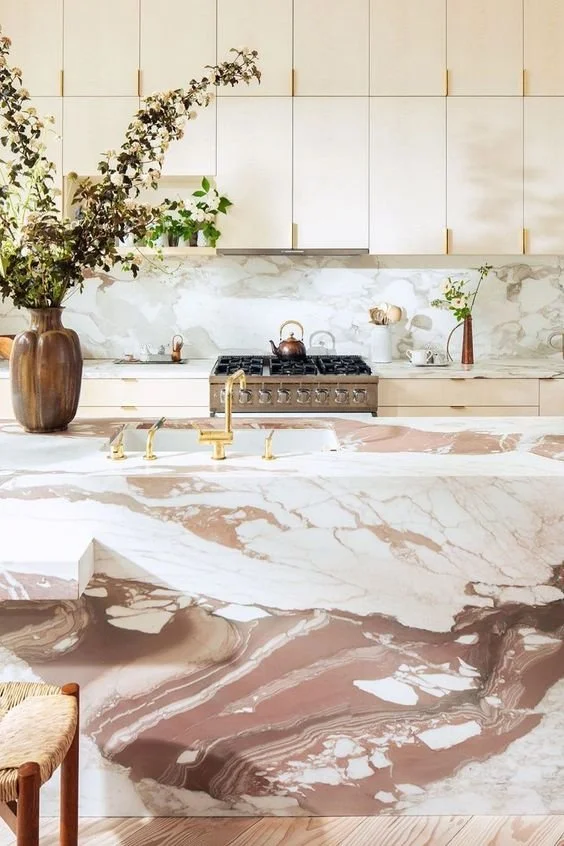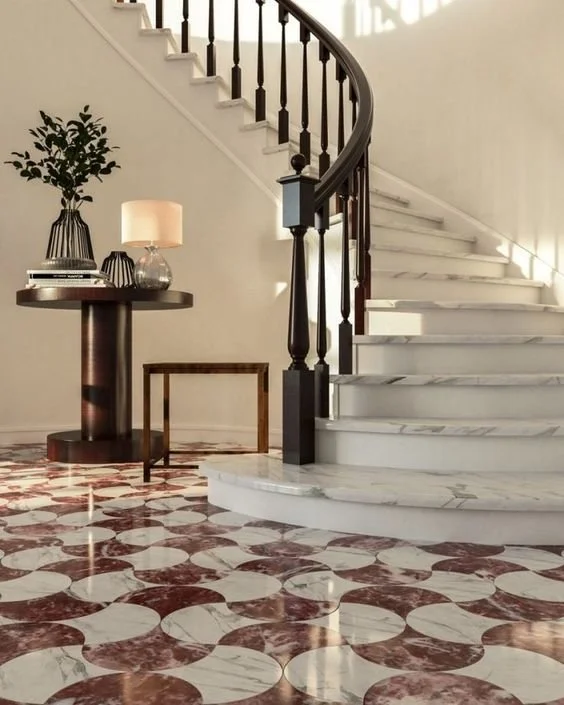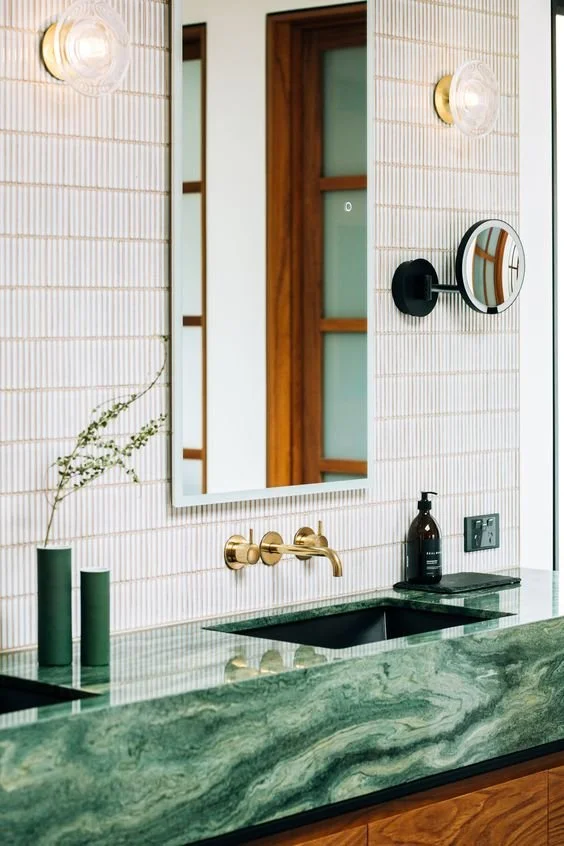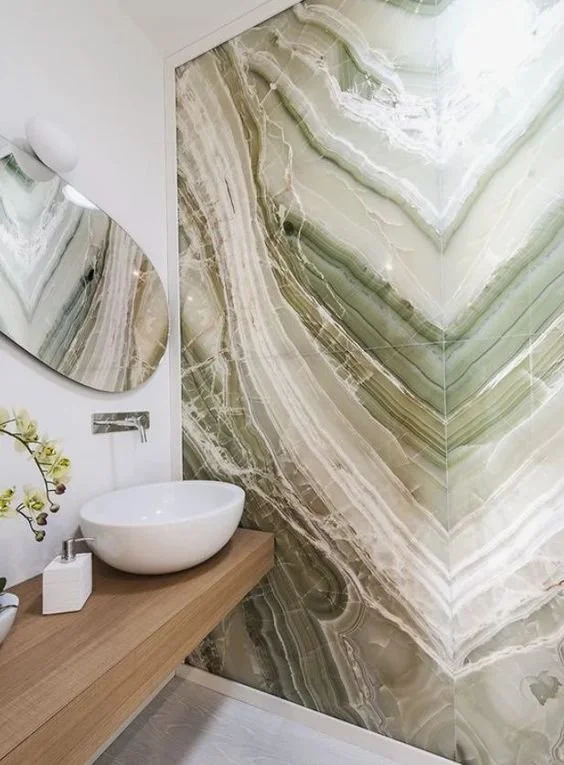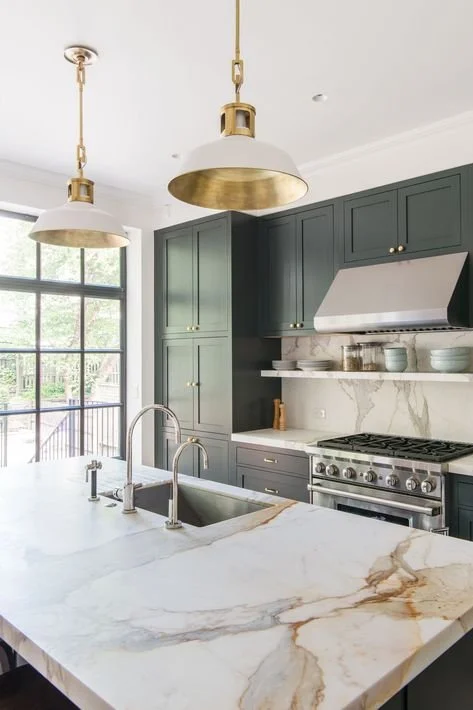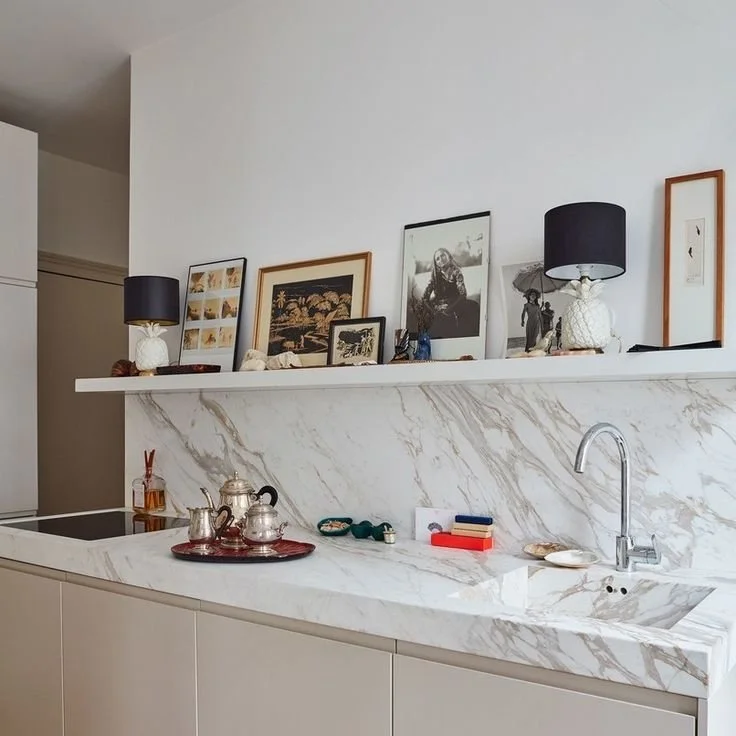The Pros and Cons of Marble
Marble is a natural material that has been prized for centuries for its beauty and durability. It’s a material that has stood the test of time, and we see it in ancient architecture and Renaissance sculptures as much as we see it in contemporary home decor.
Today, it’s a popular material for flooring, countertops, and tiles throughout the home. If you’re thinking about using marble in your next remodel, there are some important factors to consider. Here are some of the pros and cons of marble, and a quick guide to caring for it.
Photo via eye-swoon.com
Pro: Marble is a natural material.
Marble is a natural rock that’s cut directly from quarries, which can pay off in a few ways. First, unlike manmade materials such as quartz, marble doesn’t need to be shaped and mitered into slabs. This can save a lot of money by cutting down on manufacturing processes, especially for kitchen countertops.
Second, because marble is natural, each slab is one-of-a-kind and you won’t find two identical pieces out there. This adds to the luxury of this beautiful material.
Photo via variostone.com
Pro: Marble is a beautiful, elegant material.
Long associated with opulence and wealth, marble has a luxurious, classy appearance that really elevates a room. Even in a small home, marble finishes can evoke the grandeur of an Italian palazzo.
Photo via kurio.co.nz
Pro: Marble is easy to polish and will reflect light.
Marble is a slightly translucent material that allows light to penetrate the surface and illuminate the swirling veins of color within it. Unlike harder stones like quartz or granite, marble is easy to polish so you can create a high shine finish that lights up a room.
Photo via homies.la
Con: Marble isn’t cheap.
High quality materials generally don’t come cheap, and that’s certainly true of marble. Marble countertops can cost somewhere between $40 and $100 per square foot, which adds up quickly. Add this your installation costs, and you might begin considering more affordable options like granite.
Photo via kitchen.ambrasta.com
Con: Marble is high maintenance.
Unfortunately, marble is a material that can be easily scratched and stained, and these imperfections can be difficult to repair. As a porous material, marble is susceptible to discoloration from water damage. Marble is also an alkaline substance, which means that it will have a chemical reaction (read: stain) when it comes into contact with acids like citrus fruits or acidic cleaning products.
Photo via dezeen.com
How to care for marble
To keep your marble floors, countertops, or tiles looking their best, follow these simple care tips:
Apply a sealant – this coating will act as a barrier layer to protect your marble from water and other spills. You should reapply this sealant every 6 months to a year.
Regularly clean with gentle soap and water – because marble is a slightly soft rock, it’s important to avoid abrasive scrubs and brushes when cleaning it. Instead, clean marble with hot, soapy water and a dry immediately with an absorbent towel.
Clean up stains and spills immediately – it’s easy for stains to set into marble surfaces, so make sure you clean up spills as soon as they happen. You can use ammonia or peroxide to remove food stains, but use these cleaning materials sparingly.
Avoid acidic substances - because marble has an alkaline pH, it’s essential to avoid acids when caring for it. Keep bleach and vinegar far away from your marble surfaces, and always use chopping boards for acidic foods like citrus fruits and tomatoes.
Fix minor scratches – for minor scratches, you can gently file away the damage with a fine sandpaper, and reapply sealant when finished. For bigger scrapes and dents, however, it’s best to call a professional.
Photo via architecturaldigest.com

